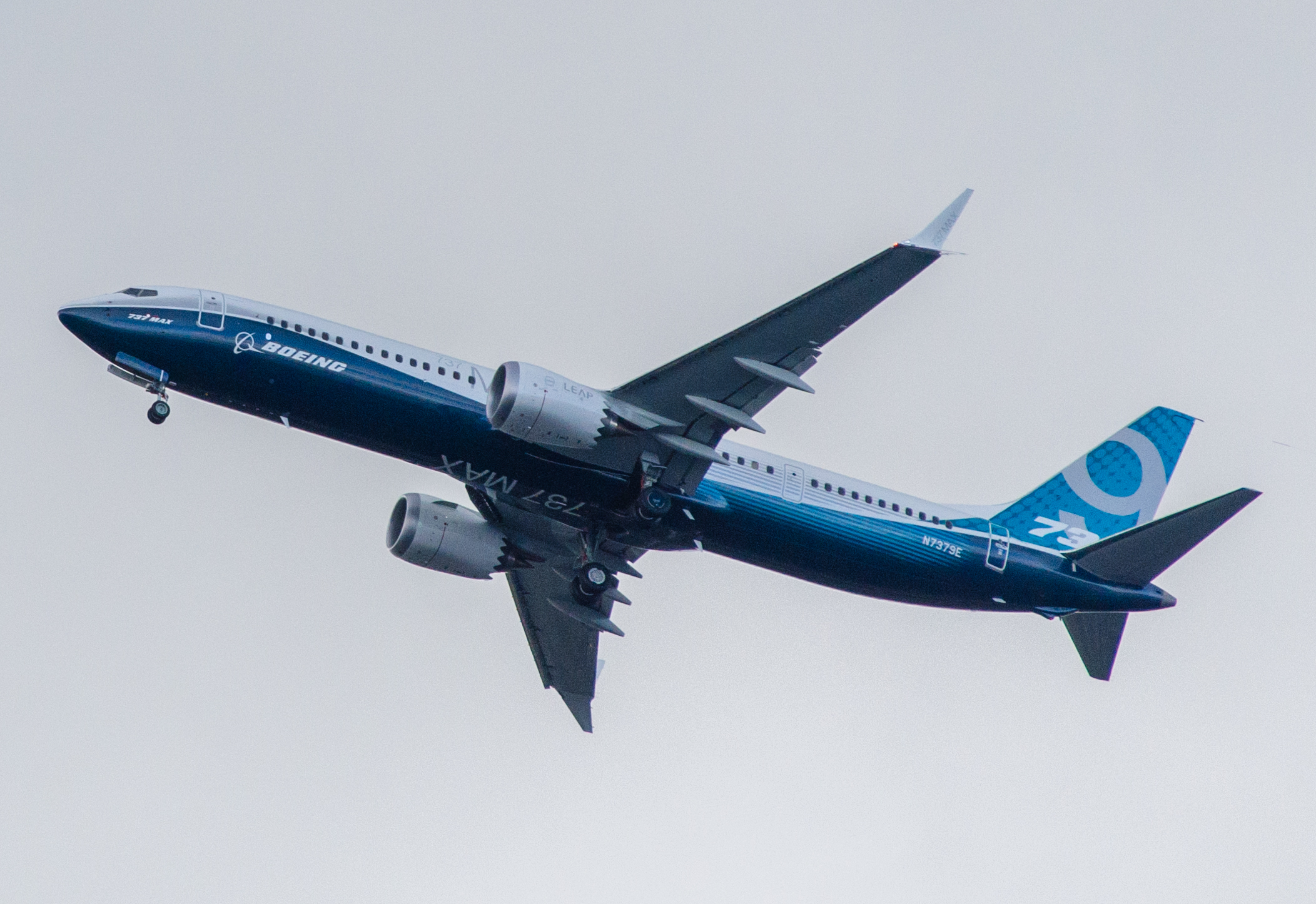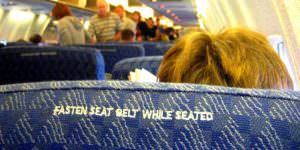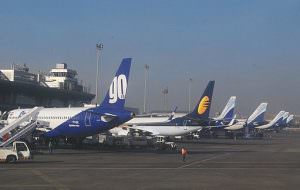Why Boeing May Never Recover From Its 737 Debacle
The company hasn’t just lost its business compass—gone is its moral one as well. Wikipedia
Wikipedia
This article was produced by Economy for All, a project of the Independent Media Institute.
Most of us are familiar with the acronym “FUBAR.” A recent New York Times article on the Boeing 737 fiasco provides a perfect illustration of the concept. We’re now learning that the company “built deadly assumptions” into its newly designed 737 Max aircraft and, specifically, its computer software system—the Maneuvering Characteristics Augmentation System (MCAS). Even worse, the New York Times account concludes that the recent air crashes that have resulted in a worldwide grounding of the Boeing Max plane “might have been avoided, if employees and regulators had a better understanding of MCAS” and if the Federal Aviation Authority (FAA) itself was not operating with outdated data on the software changes (which Boeing failed to provide).
The analysis is excellent as far as it goes. But the most damning fact only briefly hinted at in the article is that the problems were evident as early as 2012, some five years before the newest 737 version was marketed and sold across the globe. At its core, this was a hardware problem, not a software issue. Even when Boeing was using a relatively “safer” version of the early MCAS software (that was later changed to a more dangerous version), the new 737 still had an engine too large to be accommodated in its traditional spot on the plane, which ultimately distorted “the relationship between the engine’s ‘thrust’ and its center of gravity,” as I’ve written before. The resultant aerodynamic problems could not be solved with a software “solution,” no matter how “safe” the original MCAS version (that was ultimately changed to an even more dangerous version) was purported to be.
Just don’t expect any blowback from Washington. The whole episode provides yet another sick illustration of how our entire system of governance has degenerated into a fully-fledged “predator state.” About the only good thing that might emerge from this whole fiasco is that Boeing will provide future MBA students with a textbook example of how not to manage a crisis. Likewise, future historians and political scientists will marvel in incredulity at the magnitude of corruption that enveloped the country during this very dark time in the life of the republic. Assuming, of course, that there still anything left worth studying by that point.
This is also a story of deception, as The New York Times points out. Throughout the process, Boeing also actively misled the FAA whenever the industry regulatory overseer raised questions. Who was the agent of deception?
In this account, The New York Times identifies one of the leading protagonists responsible for the Boeing disaster, Mark Forkner. Forkner was “the Max’s chief technical pilot”—not merely a “test pilot”—who was in charge of the plane’s training manuals. More significantly, he was Boeing’s point man who neglected to tell the FAA that the MCAS software “was in the midst of an overhaul, according to… three F.A.A. officials.” Forkner requested removing the description of the MCAS from the pilot’s manual, and, as The New York Times reports, “Under the impression that the system was relatively benign and rarely used, the F.A.A. eventually approved Mr. Forkner’s request, the three officials said.”
The question is, was Forkner intentionally deceptive, or simply incompetent?
In his defense, the New York Times suggests that “Mr. Forkner largely worked on flight simulators, which didn’t fully mimic MCAS,” implying perhaps that he didn’t have a full understanding of the MCAS software overhaul. If true, that would suggest that Boeing’s senior management wrongly appointed an incompetent to deal with the FAA.
The other interpretation is that Forkner’s lawyer might be telegraphing a legal defense, diminishing his role in anticipation of a lawsuit. That may be less credible, given that Forkner himself was a former FAA employee, thus in effect a revolving-door technological lobbyist (unregistered) who would therefore be well-placed to deceive the FAA training certification engineers into approving whatever training cover-ups Boeing needed to hide to sell more airplanes. Whenever the FAA pushed, Forkner pushed back.
The New York Times also parenthetically mentions that Forkner started his flying career as a U.S. Air Force pilot. Given how the USAF conducts its own lobbying activities in D.C., this was likely a formative influence on his revolving-door ethics and yet another example of the polluting influence of the military on a once successful civilian enterprise, given the Pentagon’s (especially the USAF) own pathologies in this area.
Even if Forkner is ultimately absolved of responsibility, it does not absolve Boeing. Rather, it represents a monumental management failure on the part of its stability and control aerodynamicists, not its software engineers. Recall that the genesis of this disaster was a problem of hardware, not just MCAS. The extra lift of the far larger diameter engines of the 737 Max (placed on a different position on the wing) caused the plane to pitch up whenever it approached stall angles of attack at both high and low speeds. This is a problem that should have become glaringly obvious to the greenest of aerodynamics personnel at Boeing the moment the first wind tunnel model was tested at angles of attack higher than stall (it may have even been obvious on even-earlier computational fluid dynamics computer simulation results).
The New York Times notes the observations of Ray Craig, then Boeing’s chief test pilot, that the plane wasn’t flying smoothly even during the early development phase (i.e., in 2012, five years before the first sales). After high-speed tests flown in the computer simulator, Craig noted that the newer model was not flying as well as the old model. In response, he advocated a hardware solution to rectify the problem, which Boeing management rejected on the grounds that such “high-speed situations were so rare that… the software would never actually kick in,” the first of many assumptions that would ultimately prove fatal in the two eventual plane crashes.
Reading between the lines, however, it is evident that the original software designers were aware of and had already quantified the pitch-up problem in the plane (which arose because of the larger engine that had affected the plane’s center of gravity) and therefore had already programmed it into the simulator before the test pilot runs in 2012.
To mitigate the hardware flaws, The New York Times explains that:
“engineers initially designed MCAS to trigger when the plane exceeded at least two separate thresholds, according to three people who worked on the 737 Max. One involved the plane’s angle to the wind, and the other involved so-called G-force, or the force on the plane that typically comes from accelerating.”
It is true that the initial MCAS software for the high-speed problem was a relatively safe and competent two-sensor, G-force and angle-of-attack solution. The problem is that this “fix” would not work at low speeds because G-forces at low speed were too small to trigger an alarm in the 737 Max.
It is almost beyond belief that, once having tested and found a high-speed pitch-up problem programmed into the simulator in 2012, no one—neither the chief test pilot nor the aerodynamicists (i.e., the engineers responsible for the interaction of moving objects, such as airplanes with the atmosphere)—thought to check the wind tunnel data or test the simulator to see whether there was a corresponding low-speed pitch-up problem. I previously highlighted that low-speed pitch-up is far more dangerous than the relatively rare problem of very “heavy” or high angle-of-attack maneuvering at high speed. This is because takeoffs and landings occur at low speed, and takeoffs and landings are always done at relatively high angles of attack. But it was not until the 737 Max prototype was flown four years later—in 2016—that anyone reported a low-speed pitch-up problem—and then it was not an aerodynamicist but, once again, a test pilot (Ed Wilson, the new chief test pilot for the plane) who insisted there was an issue.
Here is where the problems began to cascade. Since Boeing management had already imposed the MCAS Band-Aid (in lieu of a hardware fix, albeit a relatively safe version), the cheapest, quickest and easiest-to-cover-up fix for the impossible-to-ignore low-speed problem was to issue a new, and even more ineffective, Band-Aid to the existing MCAS. In the process, it changed MCAS from a relatively safe and competent fix to a disastrously unsafe, mindlessly stupid single-sensor solution. As The New York Times reported:
“The change proved pivotal. Expanding the use of MCAS to lower-speed situations required removing the G-force threshold. MCAS now needed to work at low speeds so G-force didn’t apply.
“The change meant that a single angle-of-attack sensor was the lone guard against a misfire. Although modern 737 jets have two angle-of-attack sensors, the final version of MCAS took data from just one.”
Amazingly, the change was not subject to any further scrutiny from the FAA because, according to William Schubbe, whom the New York Times describes as “a senior F.A.A. official who worked with the training group,” said that Boeing had told him that “this thing is so transparent to the pilot that there’s no need to demonstrate any kind of failing.” In any event, the FAA had already repeatedly shown itself to be out of its depth in terms of determining the overall safety of the plane, having effectively subcontracted much of its oversight to Boeing itself.
The Boeing 737 crashes are tragedies. But what truly moves this tragedy into the realm of sheer predation and, indeed, criminality, is the (non-)response of the government. In spite of everything we now know, there has been no re-think of amending this longstanding laissez-faire revolving-door regulatory approach, especially in this White House. Consider that the newly appointed secretary of defense, Patrick Shanahan, a former Boeing executive, is already under investigation for allegedly lobbying improperly on behalf of his former company. Additionally, the Trump administration is rolling back safety regulations in the rail sector, in effect re-creating the self-regulatory conditions that now prevail at the FAA, reports Justin Mikulka from Desmog. In short, Trump’s predatory practices continue unabated: the swamp gets filled up even further as more of these fiascos occur. And the truth is that until regulatory bodies like the FAA get a proper budget that will allow them to take on the job of becoming credible third-party regulators, their actions will continue to prove ineffectual.
We can only imagine what is next—allowing the criminals to regulate the prison system? Beyond the scale of human tragedy, the whole episode provides another sad illustration that our system of governance remains profoundly sick, perhaps terminal. Washington policymakers continue to make the citizenry even more ill through their venal corruption—that is, when their political malpractice doesn’t literally kill them in the process.
Your support is crucial...As we navigate an uncertain 2025, with a new administration questioning press freedoms, the risks are clear: our ability to report freely is under threat.
Your tax-deductible donation enables us to dig deeper, delivering fearless investigative reporting and analysis that exposes the reality beneath the headlines — without compromise.
Now is the time to take action. Stand with our courageous journalists. Donate today to protect a free press, uphold democracy and uncover the stories that need to be told.





You need to be a supporter to comment.
There are currently no responses to this article.
Be the first to respond.